75th Anniversary of Naval Aviation
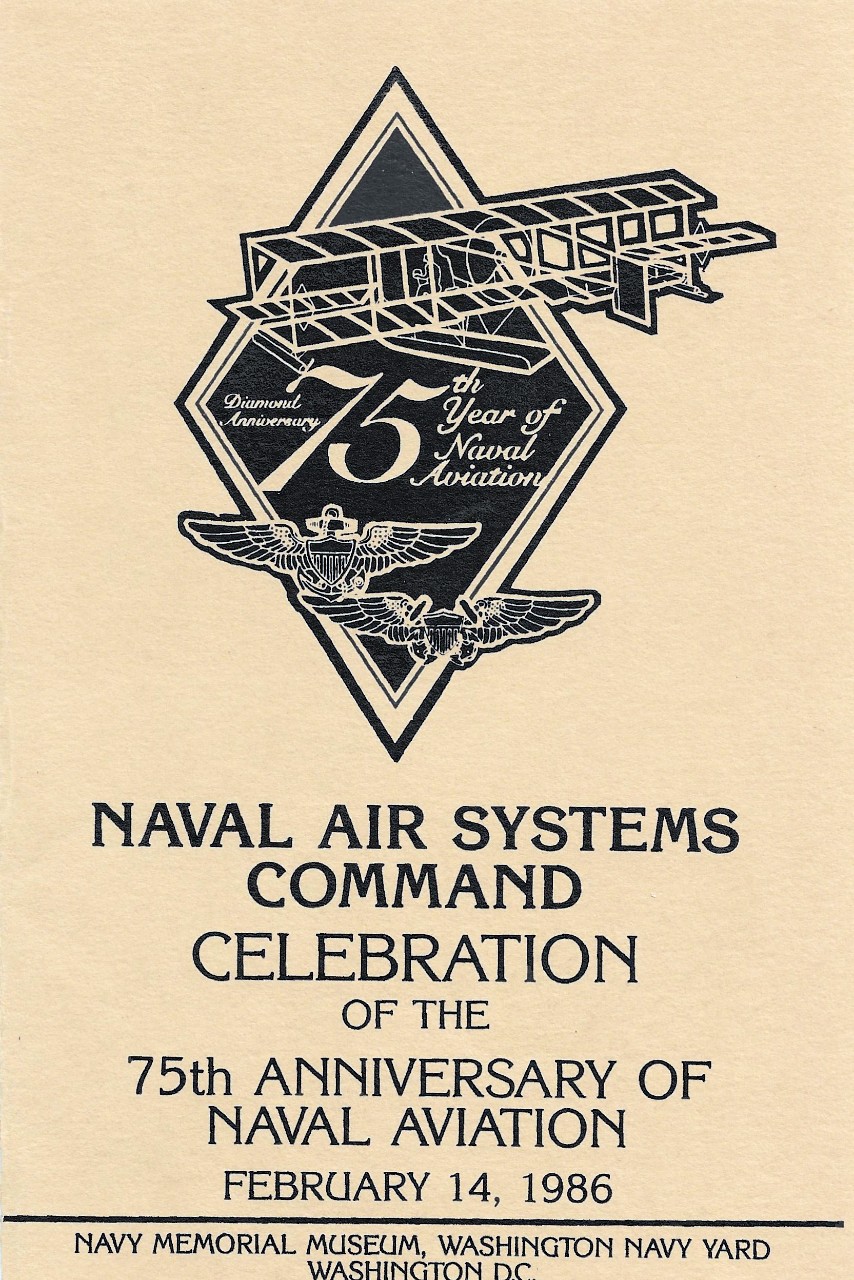
75th Anniversary of Naval Aviation Pamphlet, Front Cover.
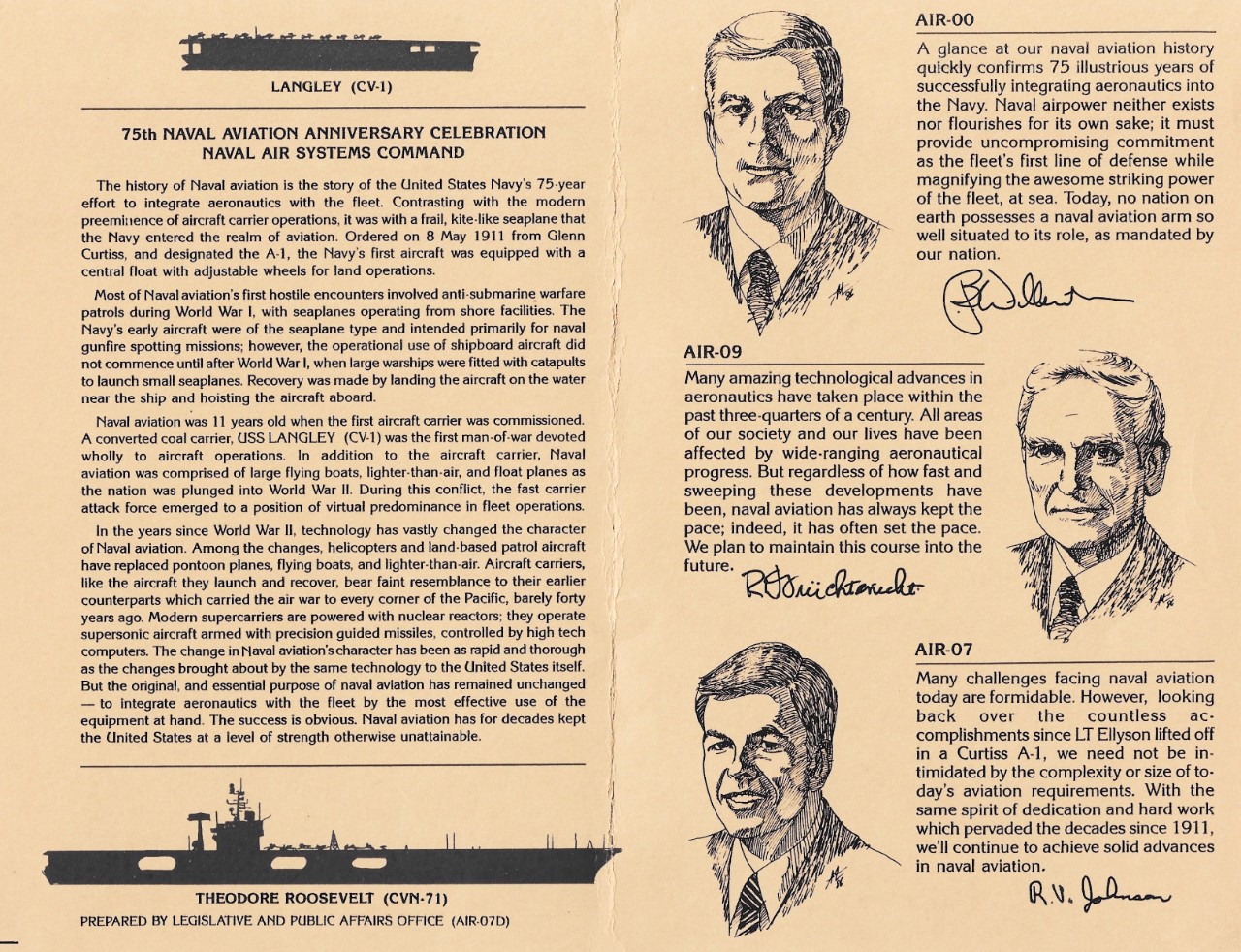
75th Anniversary of Naval Aviation Pamphlet, Interior.
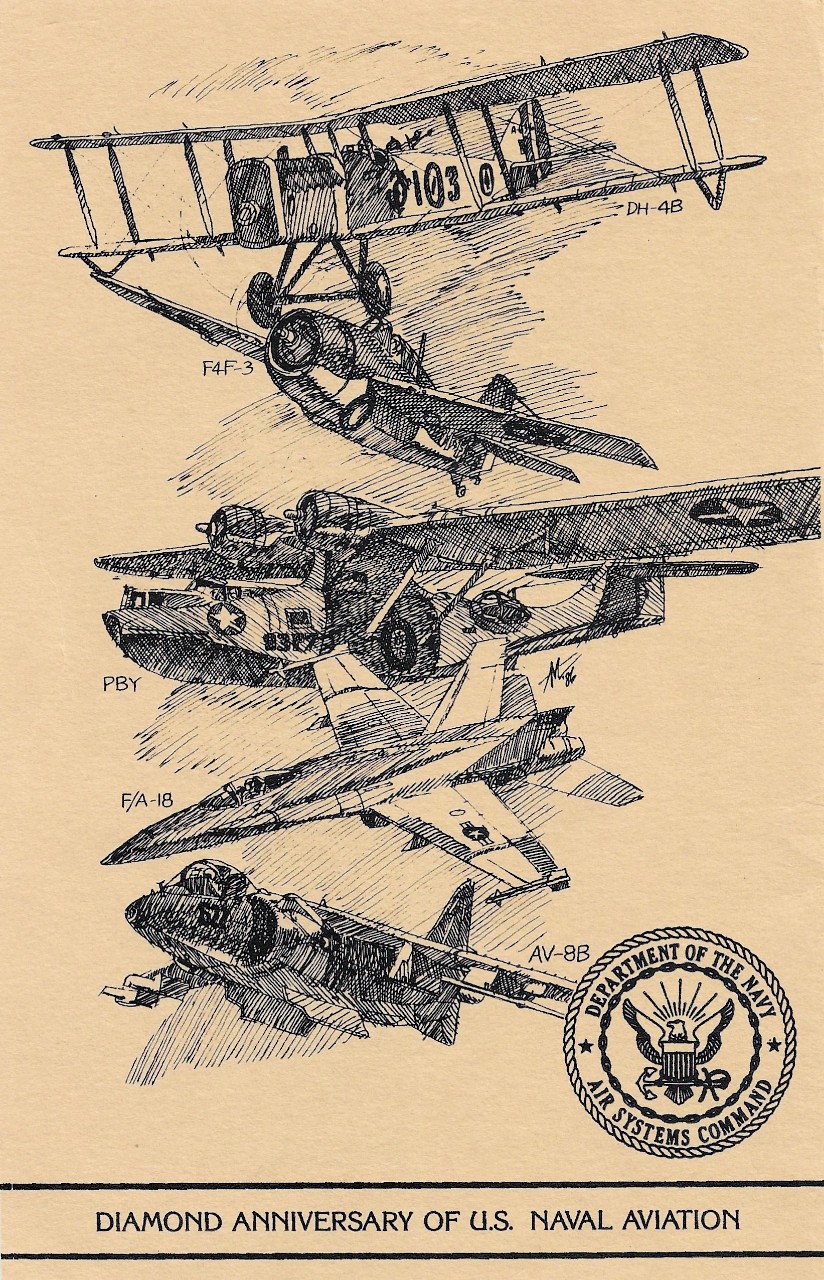
75th Anniversary of Naval Aviation Pamphlet, Back Cover.
To celebrate the 75th Anniversary of Naval Aviation, the Navy Memorial Museum (now National Museum of the U.S. Navy) held a year-long exhibit from February 1986 to 1987. The exhibit consisted of the Navy’s role in aviation from 1911 when Eugene Ely landed in a Curtiss Pusher onboard the cruiser USS Pennsylvania, making the first shipboard landing on a U.S. Navy warship. Naval Aviation during World War I was highlighted with the aviation skills of Lieutenant David S. Ingalls, the U.S. Navy’s first flying ace, models of NC aircraft, and a propeller from a flying boat. USS Ranger (CV-4), a Corsair aircraft (both still on display) represented World War II. Also exhibited were the era of non-rigid lighter-than-air airships in the 1920s and 1930s, such as USS Macon (ZRS-5). Cold War era ship models such as USS Forrestal (CV-59), a space capsule, and biographical information on Commander Alan B. Shepard Jr. Shepard was also a NASA astronaut who became first American in space in May 1961 onboard a Mercury spacecraft. He named the capsule Freedom 7. Accenting the exhibit were photographic imagery by Captain Edward Steichen and his Photographic Units during World War II.
The Director at the time was Doctor Oscar P. Fitzgerald.
Artifacts/Artwork/Objects
Intro: 1898-1916
Model: Aviation: Curtiss A-1 Triad. Along with info on Lieutenant Theodore G. Ellyson (the Navy’s first aviator)
Model: Ship: Cruiser: USS Pennsylvania, showing Eugene Ely’s Curtiss biplane, still on display in Building 76.
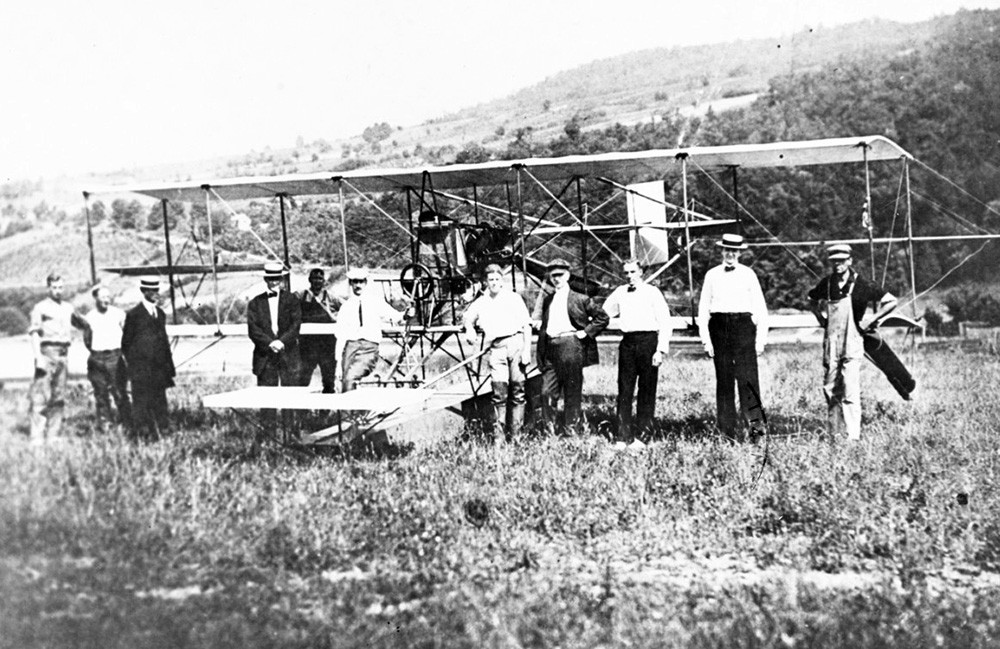
A-1 Triad, the Navy’s seaplane of 1911. Courtesy of John T. Towers, USN. NHHC Photograph Collection, NH 60856-A.
Put To the Test (1917-1919)
Lithograph: U.S. Naval Aviation
Lithographs: NC1-NC3 in heavy seas
Model: Aviation: Flying Boat, N-16
Models: Aviation: NC1 and NC4
Object: Pilot License #3
Object: Leather Helmet
Object: Log Book from first flight across the Atlantic
Graphic: Showing the route of the flight
Painting: Lieutenant David S. Ingalls, the U.S. Navy’s first flying ace
Uniform: Winter Green Flight Suit

NC-4 Trans-Atlantic Flight, 1919. Chart of the NC-4’s flight from Rockaway Beach, New York to Plymouth, England, May 1919. Official U.S. Navy Photograph, now in the collections of the National Archives, 80-G-415501.
The Twenties and Thirties
Model: Ship: Lighter than Air Aircraft: USS Macon (ZRS-5)
Model: Ship: USS Oklahoma (BB-37) with catapult launching scout planes
Object: Steering Wheel
Photographs of Destroyer Squadron 20
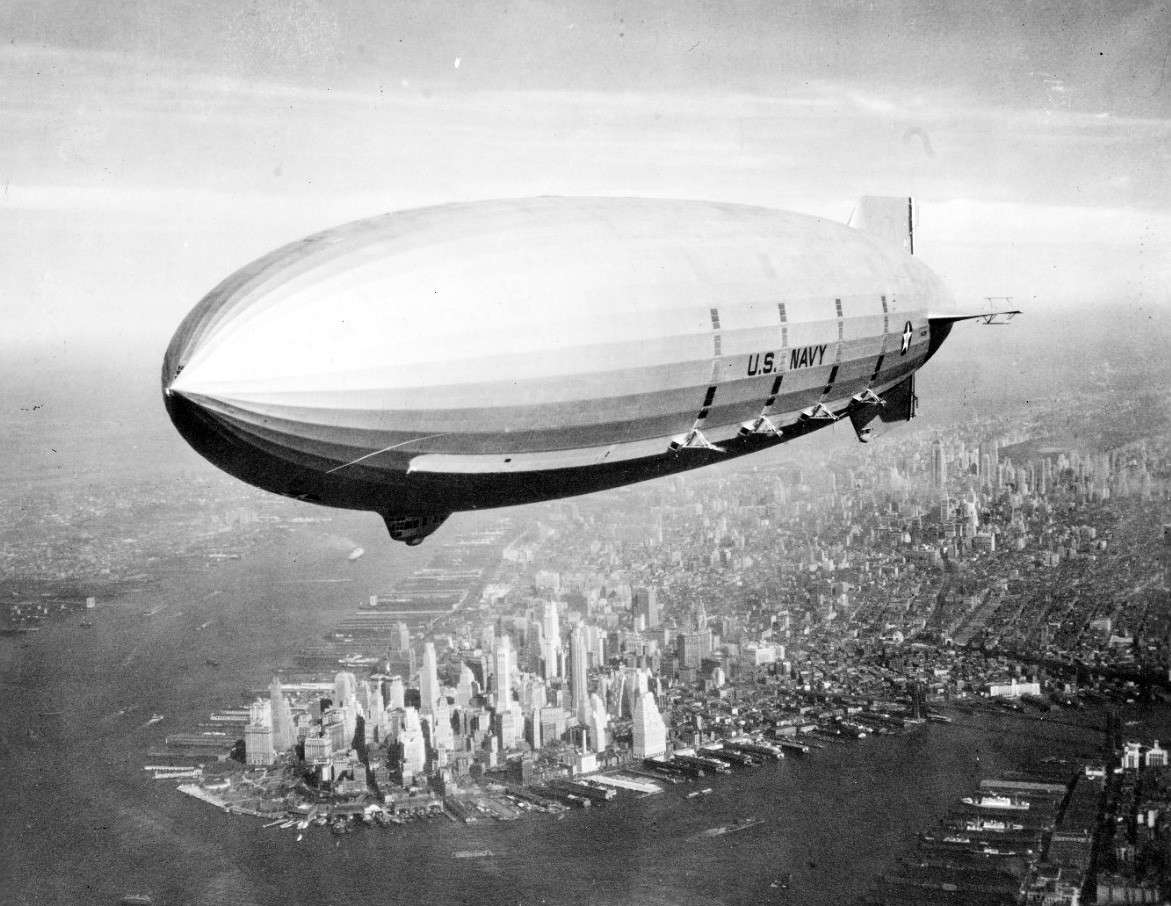
USS Macon (ZRS-5), flying over New York Harbor, summer 1933. Naval History and Heritage Command Photograph, NH 43901.
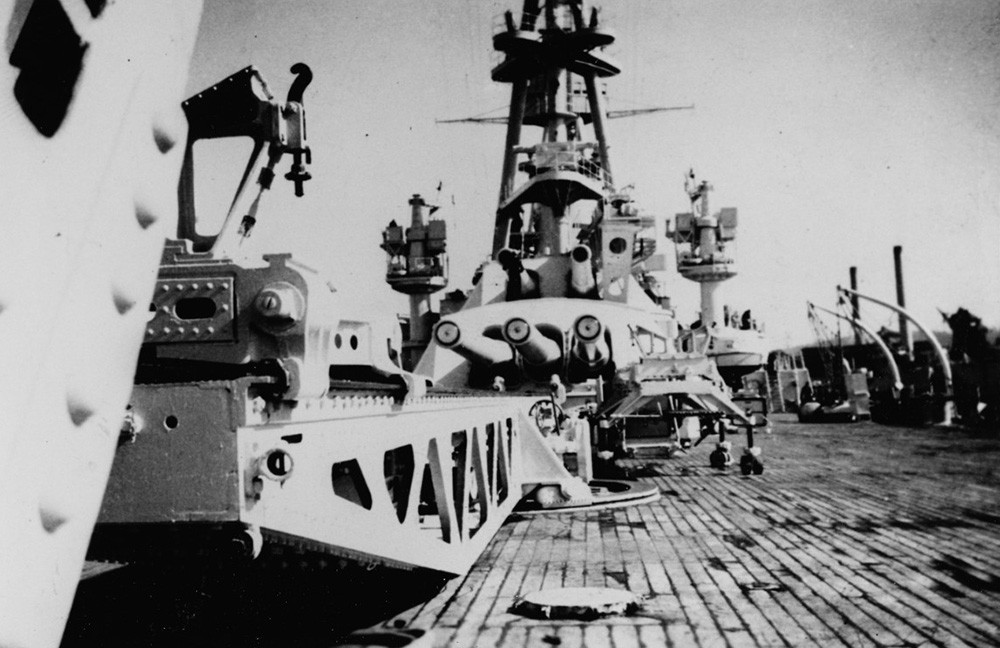
USS Oklahoma (BB-37), view looking forward from the fantail circa 1937. Naval History and Heritage Photograph, NH 84013.
Naval Aviation Comes of Age: (World War II)
Aircraft: F4U Corsair, still on display in Building 76.
Builder’s Plaque: USS Enterprise (CV-6), still on display in Building 76.
Kamikaze pieces: Japanese Kamikaze Plane wing; Japanese Kamikaze bomb fragment from USS Sterett (DD-407); and Japanese Kamikaze engine fragment from USS Harding (DMS-28)
Ship model: Carrier: USS Ranger (CV-4), still on display in Building 76.
Object: Survival mirror
Object: Summer reflector for raft
Photographs: Women Accepted for Emergency Service (WAVES) in Aviation
Poster: Enlistment Recruitment
Uniform: Admiral Halsey’s aviator goggles
Uniform: Leather fleece lined winter flying uniform
Uniform: Fleet Admiral Ernest J. King’s dress blues
Uniform: Deck Helmet from the carrier USS Hornet (CV-12) (green cloth)
Uniform: Summer aviator’s cloth helmet
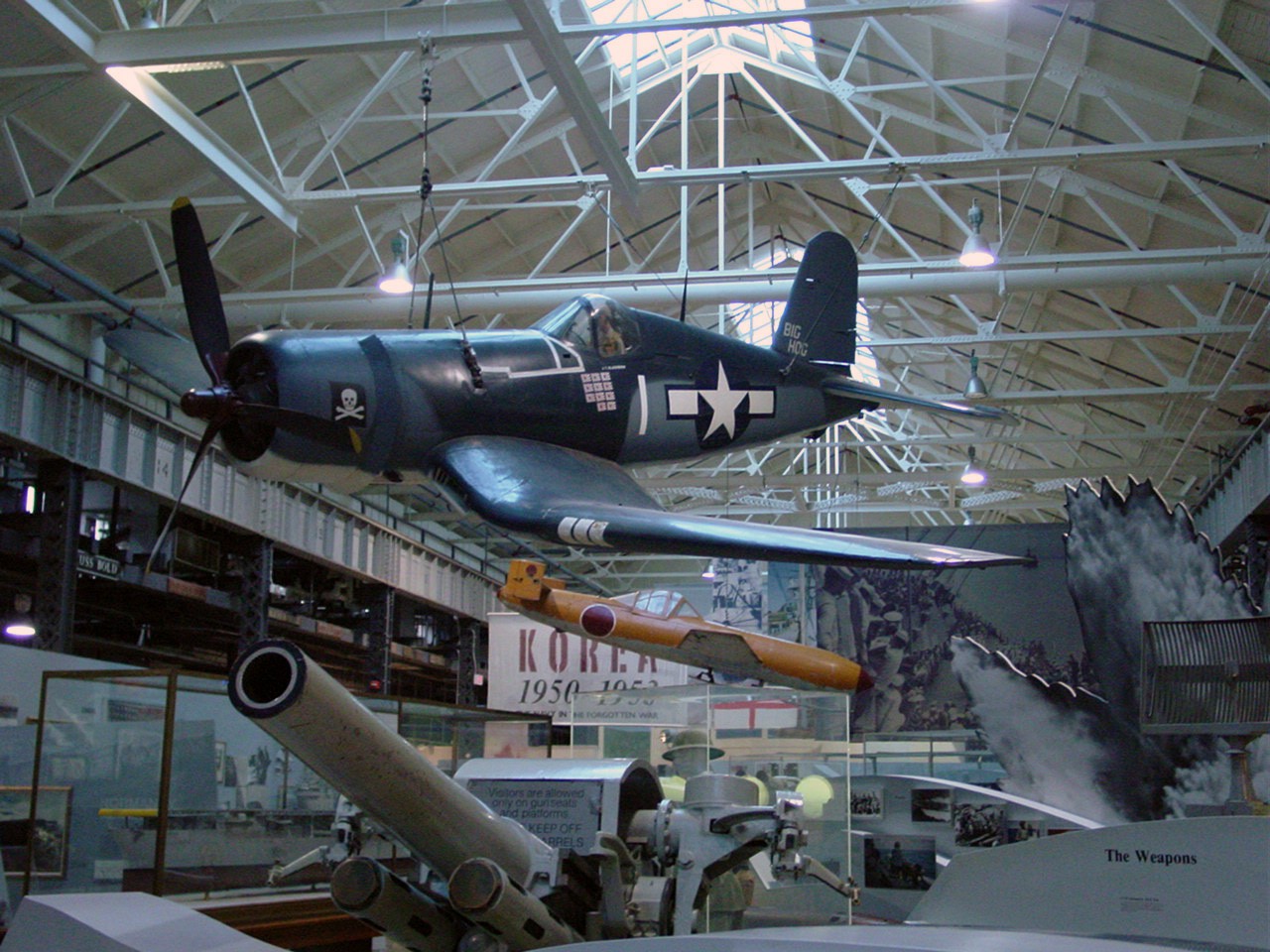
FG-1D Corsair fighter plane, still on exhibit in Bldg. 76.
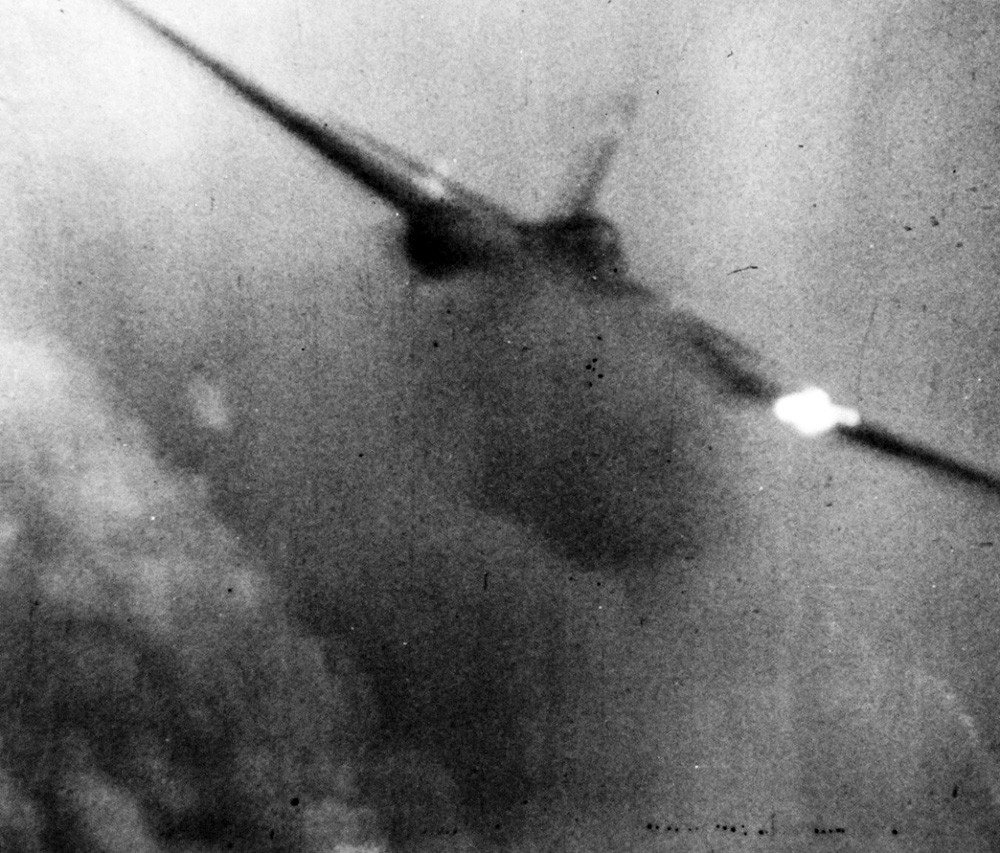
Japanese Kamikaze Attack, June 1945. Flames stream out from a Japanese Kamikaze as it is hit by anti-aircraft fire, June 28, 1945. Official U.S. Navy Photograph, now in the collections of the National Archives, 80-G-49708.
Cold War Era (1950-1980s)
Models: Aircraft: Case of 90 Airplane Models
Model: Ship: Carrier: USS Forrestal (CVA-59), the U.S. Navy’s first super carrier that was able to handle jets, still on display in Building 70.
Object: Flight Deck Coveralls
Object: Spaceship Capsule
Newspaper article on Ensign Jesse L. Brown, the U.S. Navy’s first African American Naval Aviator.
Information on Commander Alan B. Shepard, Jr., the first American in space. He retired from both NASA and the U.S. Navy as a Rear Admiral in 1974. Shepard died in 1998.
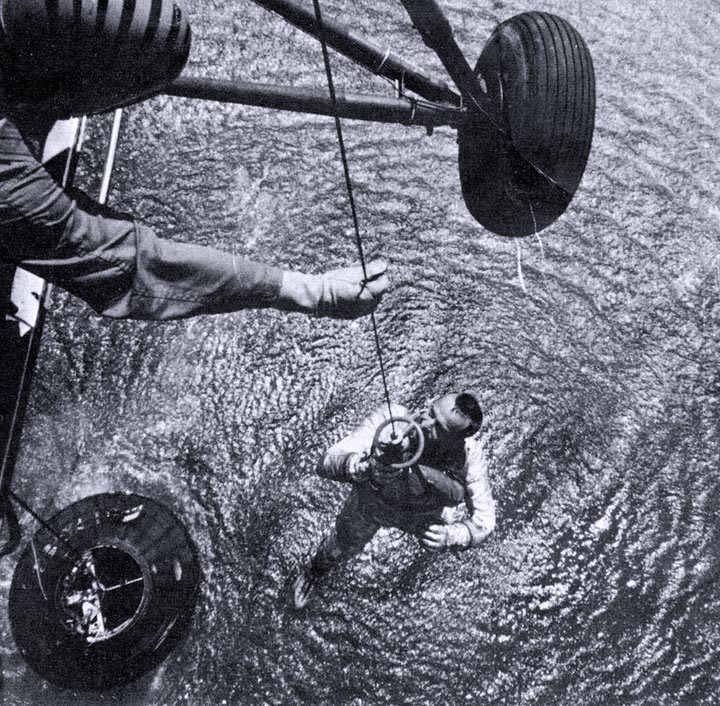
Astronaut Alan B. Shepard is rescued by a U.S. Marine helicopter at the end of his sub-orbital Mercury-Redstone 3 (MR-3) flight May 5, 1961 down range from the Florida eastern coast. Naval History and Heritage Command Photograph Collection, All Hands Collection.



